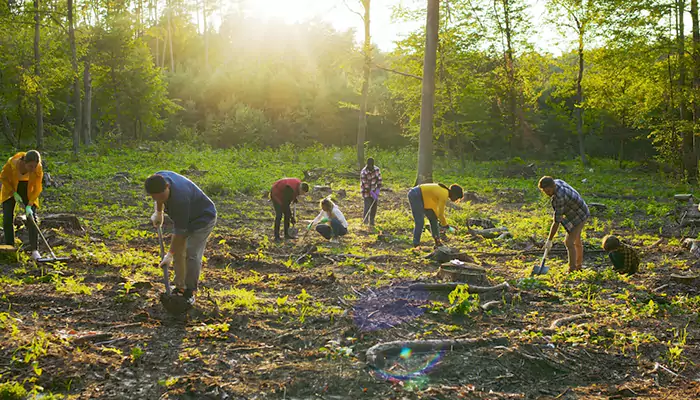Wrong plantation can increase global warming: Essential factors to consider while planting a tree
How often do we consider the impact of planting trees in the wrong places on global warming? We must now!
- Elisa Ghosh
- 27 April, 2024
- 2 mins ago

Wrong plantation can increase global warming: Essential factors to consider while planting a tree
How often do we consider the impact of planting trees in the wrong places on global warming? We must now!
Planting trees is often seen as a solution to environmental issues like global warming. While trees play a crucial role in absorbing carbon dioxide and providing oxygen, planting them in the wrong places can have unintended consequences. This blog explores essential factors to consider during tree plantation to ensure we contribute positively to the environment and mitigate global warming effectively.
Native Species Selection
Planting native tree species is vital for ecosystem health and biodiversity. Native trees are adapted to the local climate and soil conditions, making them more resilient to environmental changes. They also support native wildlife and promote ecological balance. When choosing trees for plantation, prioritize native species over exotic ones to ensure long-term environmental benefits.
Suitable Climate and Soil Conditions
Trees thrive in specific climate and soil conditions. Before planting trees, assess the site's climate, including temperature, rainfall patterns, and humidity levels. Choose tree species that are well-suited to the local climate to maximize their growth and survival rates. Similarly, consider the soil type, pH levels, and drainage capacity to ensure optimal tree growth.
Avoiding Invasive Species
Invasive tree species can outcompete native plants, disrupt ecosystems, and reduce biodiversity. When planning tree plantations, research and avoid planting invasive species that could harm the environment. Instead, focus on planting a diverse range of native trees that support local ecosystems and contribute positively to the environment.

Urban Planning and Tree Placement
In urban areas, proper planning and tree placement are crucial. Planting trees strategically along streets, in parks, and near buildings can provide shade, reduce urban heat islands, and improve air quality. Consider factors such as sunlight exposure, space availability, and proximity to infrastructure when selecting locations for tree plantation in urban settings.
Water Availability and Irrigation
Adequate water supply is essential for tree growth, especially during the early stages after planting. Consider the availability of water sources and implement irrigation systems as needed to ensure trees receive sufficient moisture. Water-efficient irrigation methods such as drip irrigation or rainwater harvesting can support tree growth while conserving water resources.
Maintenance and Care
Proper maintenance and care are key factors in ensuring the success of tree plantations. Regular pruning, pest control, and soil management practices can promote healthy tree growth and longevity. Engage community members, volunteers, or local organizations in tree care activities to foster a sense of ownership and responsibility towards environmental conservation.
Monitoring and Evaluation
Continuous monitoring and evaluation of tree plantations are essential to track their impact on the environment. Assess tree growth, survival rates, and ecosystem benefits over time. Adjust management practices based on monitoring data to optimize the effectiveness of tree plantations in mitigating global warming and enhancing environmental sustainability.
Long-Term Planning and Sustainability
Incorporate long-term planning and sustainability principles into tree plantation initiatives. Consider factors such as tree growth rates, canopy coverage, carbon sequestration potential, and the overall ecological impact of the planted trees over time. Implement sustainable practices such as mulching, composting, and organic fertilization to support tree health and ecosystem resilience for the future.
It’s not just about planting trees if you feel like planting, it’s about effective tree plantation, which involves careful consideration of some critical factors we just discussed. Star implementing these essential factors into tree planting initiatives, and you can contribute positively to the environment, mitigate global warming, and create sustainable green spaces for future generations.






